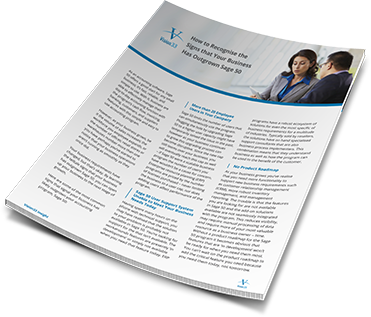Take a look at the steps you can use at the end of the month to ensure your financial statements are correct and that your financial books are healthy.
 As a business owner, it is your responsibility to keep accurate and up-to-date accounting records to track your company’s financial performance. As you wrap up each month, the importance of month-end closing procedures will ultimately impact your ability to correctly analyse your business finances and operations. With so much going on, it’s easy to lose sight of financial transactions, so consider this an opportunity to pause and take a look at your accounting procedures.
As a business owner, it is your responsibility to keep accurate and up-to-date accounting records to track your company’s financial performance. As you wrap up each month, the importance of month-end closing procedures will ultimately impact your ability to correctly analyse your business finances and operations. With so much going on, it’s easy to lose sight of financial transactions, so consider this an opportunity to pause and take a look at your accounting procedures.
There are several key issues that your accounting department is faced with when it comes to month-end close processes. These can include:
- Intensive manual processing, such as datamatching and reconciliations
- Differences unidentified and some items left open, due to lack of time
- Lack of visibility into accounting records
- Internal pressure to close the books faster
With these challenges in mind, let’s take a look at the steps you can use at the end of the month to reconcile your general ledger, ensure your financial statements are correct and that your financial books are healthy.
KEY GENERAL LEDGER ACCOUNT RECONCILING REPORTS
- Accounts receivable reconciliation to AR general ledger account balance for the same ending date
- Accounts payable reconciliation to AP general ledger account balance
- On-hand inventory value reconciliation to inventory G/L account balance
RECOMMENDED GENERAL LEDGER ACCOUNTING BALANCE RECONCILING REPORTS
- The amount column total in the “Goods Receipts PO” option of the Open Items List should balance to ‘Goods Received, Not Invoiced’.
- The amount column total in the ‘A/R Down Payments – Not Yet Fully Applied’ combined with the ‘A/R Down Payments – Not Paid’ option of the Open Items List should balance to ‘Deposit on Customer Orders’ G/L Account Balance
- The Amount column total in the ‘A/P Down Payments – Not Yet Fully Applied’ combined with the ‘A/P Down Payments – Not Paid’ option of the Open Items List should balance to ‘Prepayments on Purchase Orders’ G/L Account Balance
MONTHLY TRANSACTION DETAIL REPORTS THAT RUN FOR THE PERIOD OF REVIEW
Reports include:
- Sales Tax Report
- Check Register Report
- Sales Analysis
- Purchase Analysis
- Purchase Journal – to report all expense detail posted for the period
- Inventory Stock Adjustments
ENTER AND POST ANY REQUIRED MONTH-END JOURNAL ENTRIES
- Verify contents of all cost pool to be allocated
- All entries should empty the revenue, expense and income summary accounts
RUN MONTH-END FINANCIAL STATEMENTS AND SUPPORTING SUB-LEDGER DETAILS REPORTS
- Balance Sheet
- Income Statement
- G/L Trial Balance
SET PERIOD STATUS TO “LOCKED” TO ENSURE THERE ARE NO UNAUTHORIsED, ACCIDENTAL OR UNKNOWN POSTINGS TO THE PERIOD.
- Administration> Systems Initialisation> Posting Periods
SYSTEM HOUSEKEEPING TASKS
- Business Partner accounts reconciliation tools
- Un-deposited funds account
- Ensure that all posted checks have been confirmed with the AP check number
Take some time to review your month-end reporting process. Are you satisfied with your reporting? Do you have concerns with how it helps you paint a financial picture for your business? Fortunately the steps above can be accessed built into an all-in-one solution.
This month-end closing template is provided by Vision33 TOTAL Care Support as a starting place for you to begin your own Standard Operating Procedure. The month-end closing and reconciliation template is designed to facilitate International business practice and GAAP compliance utilising SAP Business One. Use this as a template, but you can change it based on your own business needs. You might have your own general ledger entries or end-of-month processes to consider, so feel free to customise it the template based on your requirements.
How do you determine that you're ready to make the move to a more powerful business management solution? Does your business have any of the following requirements:
- More than 20 users
- Multiple warehouses
- Extensive budgeting
- Advanced reporting & trend analysis
By learning the telltale signs that your business has outgrown it's current accounting software, you can open up to the next stage of growth. Read our brochure to see how SAP Business One grows with your company versus your current accounting programs.

